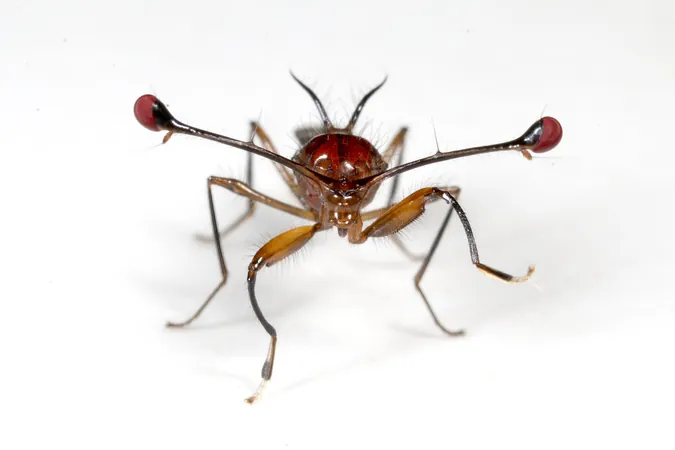
Unlocking the Secrets of the 'Selfish Gene': A Game-Changer in Insect Population Control!
2025-09-18
Author: Mei
Unraveling Genetic Mysteries to Combat Pests
Groundbreaking research is delving into the enigmatic world of genetics, focusing on the revolutionary potential of the so-called "selfish gene". This innovative study aims to discover how these genes can be harnessed to manage harmful insect populations that contribute to significant global issues, including pestilence and disease transmission.
What is Meiotic Drive?
At the forefront of this investigation is a phenomenon known as "meiotic drive". In typical inheritance, both maternal and paternal genes have an equal shot at being passed on. However, selfish genes can manipulate this process, skewing the odds in their favor and disrupting normal genetic inheritance.
A Closer Look at the Research Team
Led by the esteemed University of Sheffield, this international consortium of scientists has published their findings in the journal PLOS Genetics. Dr. Alison Wright, a leading figure in the research, describes meiotic drive as a force that can significantly alter the gender ratio of insect offspring, potentially leading to the extinction of entire populations.
The Malaysian Stalk-Eyed Fly: A Key to Understanding Insect Genes
One of the key subjects of this research is the Malaysian stalk-eyed fly (Teleopsis dalmanni). While this insect isn't a pest itself, it serves as a model for understanding how meiotic drive operates. Using cutting-edge single-cell RNA sequencing, scientists analyzed sperm cell gene expression, making strides in uncovering the intricate mechanisms behind selfish genes.
Impacts on Sperm Mobility and Offspring Ratios
According to Dr. Peter Price, the study’s lead author, their innovative approach revealed that the presence of selfish genes severely impairs the mobility of Y-chromosome-carrying sperm. This results in an alarming decrease in male offspring, leading to skewed sex ratios and dire implications for the species' reproductive viability.
The Future of Insect Population Management
As researchers continue to unravel the complexities of these selfish genes, the implications could be profound. By understanding the genetic foundations and long-term effects of meiotic drive, scientists hope to develop effective strategies to regulate populations of disease-carrying insects, potentially averting public health crises and agricultural challenges worldwide.
Conclusion: A New Era of Genetic Control?
This research not only enhances our comprehension of genetic inheritance but also opens the door to novel approaches in pest management. The future of controlling harmful insect populations may very well hinge on the secrets of selfish genes.




 Brasil (PT)
Brasil (PT)
 Canada (EN)
Canada (EN)
 Chile (ES)
Chile (ES)
 Česko (CS)
Česko (CS)
 대한민국 (KO)
대한민국 (KO)
 España (ES)
España (ES)
 France (FR)
France (FR)
 Hong Kong (EN)
Hong Kong (EN)
 Italia (IT)
Italia (IT)
 日本 (JA)
日本 (JA)
 Magyarország (HU)
Magyarország (HU)
 Norge (NO)
Norge (NO)
 Polska (PL)
Polska (PL)
 Schweiz (DE)
Schweiz (DE)
 Singapore (EN)
Singapore (EN)
 Sverige (SV)
Sverige (SV)
 Suomi (FI)
Suomi (FI)
 Türkiye (TR)
Türkiye (TR)
 الإمارات العربية المتحدة (AR)
الإمارات العربية المتحدة (AR)